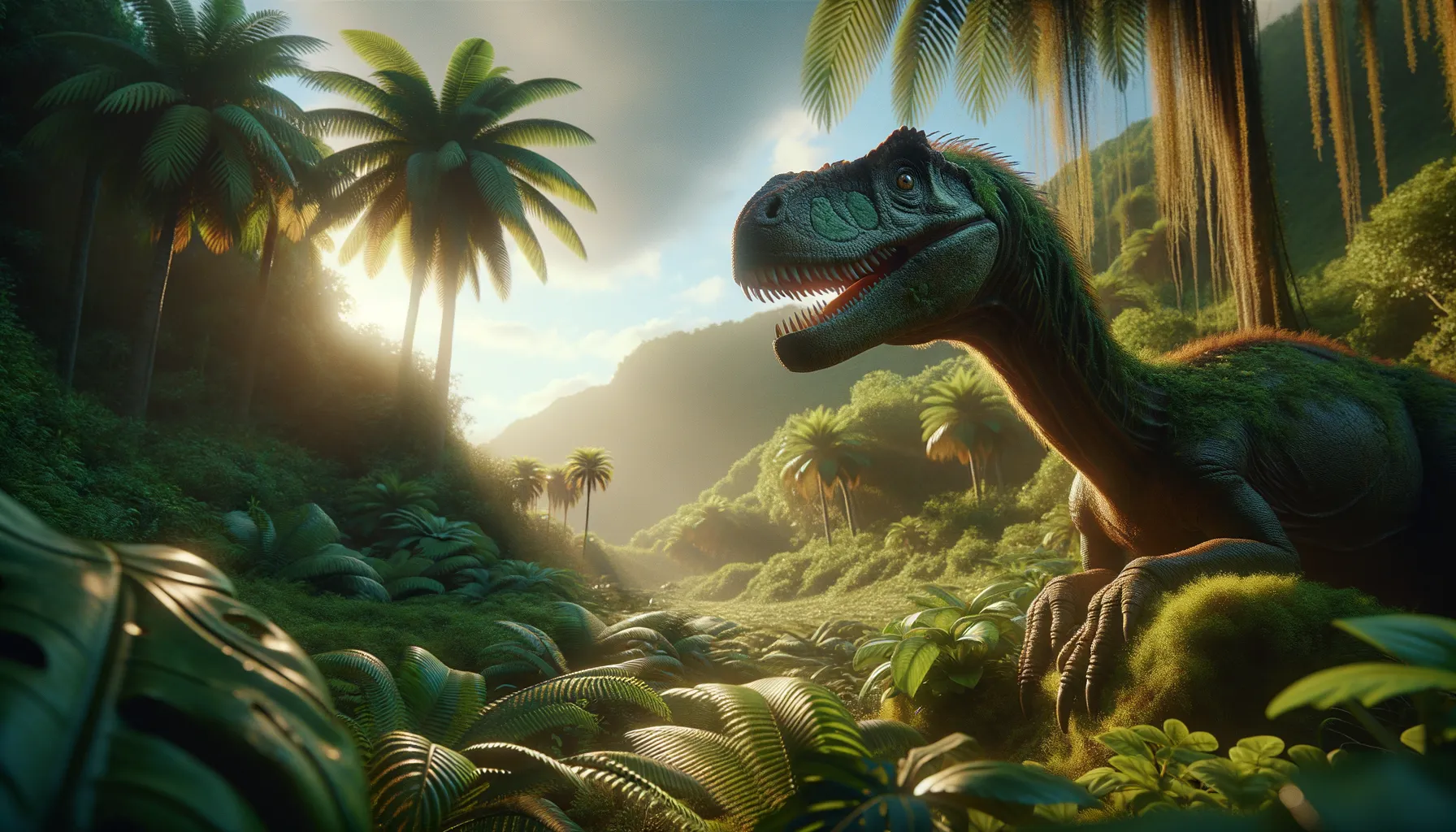
Penelopognathus
A bite above the rest in Cretaceous times!
Period
Cretaceous
Length
Around 5 meters in length.
Height
Roughly 1.5 meters tall.
Weight
Approximately 100 kilograms.
Penelopognathus was a distinctive dinosaur with its small size and unique dental arrangements. Known from fossils found in China, this dinosaur roamed during the Early Cretaceous period. Belonging to the clade of iguanodontians, it had characteristics that suggest an herbivorous lifestyle, similar to other members of its group. Its discovery added valuable information on the evolutionary transition of dinosaurs within this clade, enhancing our understanding of dinosaur biodiversity and adaptation.
Diet
Penelopognathus had a herbivorous diet, feeding primarily on available plant materials. Its teeth were well-adapted to grinding plant matter, allowing it to consume a variety of vegetation that thrived during the Cretaceous period.
Hunting
As an herbivore, Penelopognathus did not engage in hunting but foraged for plants. It likely relied on its ability to move through dense foliage to find food rather than pursuing mobile prey.
Environmental challenges
Penelopognathus faced environmental challenges such as fluctuations in available plant resources. The changing climates and environments of the Early Cretaceous would have required adaptability in diet and habitat. Predators in the ecosystem posed additional threats, necessitating vigilance and possibly a reliance on group dynamics for protection.
Speed
Likely slow-moving due to its small size.
Lifespan
Estimated to live around 10 to 20 years.
First discovery
Discovered in China by Xu Xing in 2005.
Fun Facts
- Penelopognathus was a small herbivorous dinosaur that lived during the Early Cretaceous period.
- Its name means 'mop jaw' due to its unique jaw structure with a beak-like appearance.
- This dinosaur was a member of the Hadrosauroidea, a group known for their 'duck-billed' appearance.
- Penelopognathus fossils have provided valuable information about the diversity of early Asian hadrosauroids.
- It was discovered in what is now the Gobi Desert of China, a hotbed for dinosaur discoveries.
- Penelopognathus likely lived in herds, which provided protection and better access to food resources.
Growth and Development
Penelopognathus likely experienced a rapid growth rate, common among dinosaurs of its size to quickly reach a size less vulnerable to certain predators. Juveniles might have had different dietary needs than adults, possibly focusing on softer plants until their teeth fully developed. Growth could have been influenced by environmental factors such as food availability and climatic conditions.
Habitat
Living in what is now China, Penelopognathus existed in a region that likely had a diverse range of flora. Its habitat would have included forested areas and open plains where vegetation was abundant. The environment supported a variety of herbivorous and carnivorous species, each adapted to their ecological niches.
Interaction with other species
Penelopognathus likely coexisted with other dinosaur species, both predators and herbivores. Its interactions would include competition for food with other herbivores and evasion behaviors with carnivorous species. Communication within its group, if it lived socially, could have been a key aspect of its survival strategy.
Natural lifespan
Penelopognathus lived approximately 10 to 20 years in the wild.
Reproduction
Reproductive strategies likely included egg-laying, as evidenced by nesting behaviors in related species. Courtship might have involved visual displays or sounds, though the specifics are unknown. Nesting sites could have been communal or solitary, depending on environmental pressures and social behaviors.
Social behaviour
Penelopognathus might have exhibited social behavior, potentially forming small herds for foraging and protection. Such grouping would provide advantages in detecting predators and locating food. Communication among individuals could have involved vocalizations or physical displays to maintain group cohesion.
Fossil locations
Fossils of Penelopognathus have been found in China, particularly in the Gobi region, contributing to our understanding of Early Cretaceous ecosystems. These fossils provide critical insights into the diversity and distribution of iguanodontian dinosaurs during this era. The region's rich fossil beds continue to be a source of significant paleontological discoveries.
